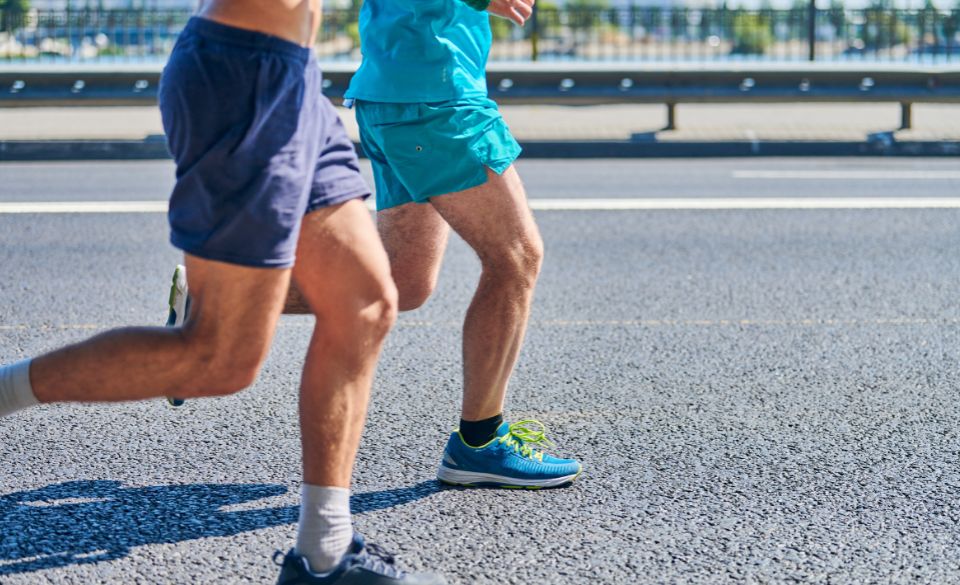
Chafing And Running: How To Prevent It And Deal With It
Page Contents
As runners, we’re intimately familiar with the exhilaration of the open road and the feeling of pushing our limits. But along with the joys of running come some less glamorous companions, and one of the most dreaded is chafing. The friction-induced irritation can turn a blissful run into an uncomfortable ordeal. Fear not, fellow runners, for in this guide, we’ll explore the art of preventing and dealing with chafing, so you can continue to embrace the miles with confidence and comfort.
8 Tips To Prevent Running Chafing: Armor Up Before You Lace Up
1. Choose Your Gear Wisely
Before you even think about hitting the pavement, make sure you’ve chosen the right gear. Opt for moisture-wicking, seamless, and breathable clothing. These fabrics minimize friction and help keep your skin dry by allowing sweat to evaporate. The right attire can be your first line of defense against chafing.
2. Lubrication: Your Secret Weapon
Lubrication is the runner’s secret weapon against chafing. Apply a layer of anti-chafing balm, petroleum jelly, or specialized creams to areas prone to friction, such as your inner thighs, nipples, groin, and armpits. This creates a protective barrier that reduces friction and minimizes the chances of chafing.
3. Mind Those Seams
Seams might seem like small details, but they can have a big impact on your comfort. Look for clothing with flat or strategically placed seams that won’t rub against your skin. The smoother the fabric, the less friction you’ll experience during your run.
4. Keep Your Skin Dry
Moisture can exacerbate chafing, so keeping your skin dry is crucial. Choose moisture-wicking fabrics that pull sweat away from your skin. Consider using talcum powder or specialized anti-chafing powders to help absorb excess moisture and reduce friction.
5. Don’t Skip the Warm-Up
Warming up isn’t just about preparing your muscles – it’s also about priming your skin for the run ahead. A proper warm-up gets your blood flowing and reduces the risk of chafing by preparing your skin for the demands of running.
6. Fuel and Hydrate
Proper nutrition and hydration aren’t just important for your performance – they also play a role in preventing chafing. Dehydrated skin is more prone to irritation, so make sure you’re drinking enough water. A balanced diet supports healthy skin, reducing the risk of chafing.
7. Gradual Increases
Increasing your mileage or intensity too quickly can stress your skin and lead to chafing. Gradually increase your training volume to give your skin time to adapt to the demands of running. Slow and steady wins the race – and prevents chafing!
8. Post-Run Hygiene
After your run, change out of wet clothes as soon as possible. Shower to remove sweat and salt from your skin, as these can contribute to chafing. Maintaining good hygiene practices helps keep your skin happy and less susceptible to irritation.
By following these eight tips, you’ll be arming yourself with the knowledge and strategies to prevent running chafing. Remember, running should be a joyful experience, and with the right precautions, you can minimize discomfort and focus on the thrill of the run.
How to Prevent Chafing in Your Thighs, Nipples, Groin Area, and Armpits
Thighs: Embrace Longer Shorts and Lubrication
Chafing between the thighs is a common woe, especially on those longer runs. Combat it by opting for longer shorts that provide extra coverage. These help reduce friction between your thighs, making it harder for them to rub against each other. Additionally, applying an anti-chafing product or even a piece of medical tape can create a protective barrier and keep your thighs happily gliding along.
Nipples: Guard Your Sensitive Spots
Nipple chafing is a painful reality for many runners, often causing more discomfort than we care to admit. To prevent this, consider wearing specialized nipple guards or bandages. These act as a shield between your skin and your shirt, minimizing friction. You can also liberally apply anti-chafing balms to your nipples before your run. Alternatively, choose a snug-fitting, moisture-wicking shirt to reduce friction in this sensitive area.
Groin Area: Opt for Moisture-Wicking Underwear and Lubrication
The groin area is another potential chafing hotspot. Combat it by selecting moisture-wicking underwear or shorts with built-in liners. These fabrics help keep the area dry, reducing the likelihood of chafing. Don’t forget to apply a thin layer of lubricant or anti-chafing balm to create a protective barrier. Your groin will thank you for the extra care!
Armpits: Smooth and Comfortable
Armpit chafing might not be as commonly discussed, but it’s no less uncomfortable. To prevent it, opt for shirts with smooth, flat seams in the armpit area. This minimizes rubbing and friction. Additionally, applying a thin layer of petroleum jelly or anti-chafing balm can create a protective barrier, helping you glide through your run without discomfort.
How to Treat Chafing in the Middle of Your Run: Quick Fixes to Keep You Going
1. Adjust Your Stride and Form
When chafing strikes, take a moment to assess your stride and running form. Sometimes, a slight adjustment can shift the pressure points and provide relief. Experiment with changing your arm swing or altering your stride length to reduce friction in the affected area. This subtle modification can make a world of difference and allow you to power through the discomfort.
2. Clothing Shuffle: Make Mid-Run Adjustments
If you feel chafing in a specific area, take a quick break to adjust your clothing. Roll up the waistband of your shorts, tug down your shirt, or reposition your sports bra to change the contact points that are causing friction. This impromptu clothing shuffle can provide immediate relief and let you continue your run more comfortably.
3. Reapply Lubrication: Combat Friction On the Go
If you’ve got an anti-chafing balm or lubricant stashed in your running gear, it’s time to put it to use. Find a discreet spot and reapply a thin layer to the irritated area. This creates a protective barrier that reduces friction and minimizes further irritation. Keep a travel-sized lubricant handy, and you’ll be ready to tackle chafing whenever it strikes.
4. Create a Temporary Barrier
Got a small bandage, medical tape, or even a piece of clean cloth? Use it to create a temporary barrier between your skin and the fabric causing chafing. While this might not be the most elegant solution, it can offer much-needed relief and allow you to finish your run without the distraction of discomfort.
When to See a Doctor: Taking Chafing Seriously
Most cases of chafing can be managed with preventive measures and self-care. However, if chafed areas become infected, show signs of pus, severe redness, or if you experience persistent pain, it’s time to seek medical attention. Infections can complicate the healing process, so don’t hesitate to consult a healthcare professional if you’re concerned.
Final Words
With these strategies in your running arsenal, you’re well-equipped to prevent chafing in those tricky areas. Remember, running should be a joy, not a pain-inducing experience. By choosing the right gear, utilizing lubrication, and implementing smart practices, you’ll be able to enjoy your runs to the fullest. Say goodbye to chafing woes and hello to chafe-free, comfortable miles.



